Carmel-by-the-Sea (Part 1)
A European style village overlooking a pristine white sand beach: what’s not to like?
Carmel-by-the-Sea or Carmel, for short, may be the international destination in an area that’s full of them, the Monterey Peninsula. The city garners more than its share of acclaim from some of the best known, most credible travel sites in the country. When you find yourself in a 15 M.P.H. crawl driving down Highway 1 on a typical summer’s day, or walk Ocean Avenue and hear five different languages spoken in a span of ten minutes, you know the world has gotten the message.
Adding to Carmel’s cachet is its incredibly rich history and pedigree as an artists’ and writers’ colony which infuses its current sensibilities to a certain extent. If you are interested in the city’s past, you can start by looking here.
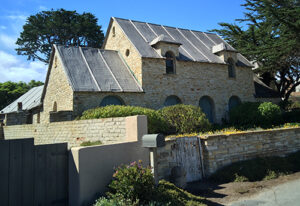 How does the city compare to Monterey and Pacific Grove, the other two cities we’ve covered to date in this blog? Hopefully after the next few posts you’ll be able to decide for yourself (although make sure you’ve read or re-read our Monterey and Pacific Grove posts before you do).
How does the city compare to Monterey and Pacific Grove, the other two cities we’ve covered to date in this blog? Hopefully after the next few posts you’ll be able to decide for yourself (although make sure you’ve read or re-read our Monterey and Pacific Grove posts before you do).
There’s no question that in this era of cookie-cutter tourist attractions, Carmel remains unique. Rigorous development guidelines will likely keep it that way long into the future. The official Carmel-by-the-Sea travel website calls it a “European style village”, and maybe at its heart it is, but the architecture is more varied than that. While a fair share of commercial buildings and homes clearly display their Northern/Central European influence, they often they reside next to sleek modernist facades and more timeless structures that look as if they are inhabited by fairies, pixies, brownies, or some other form of wee folk.
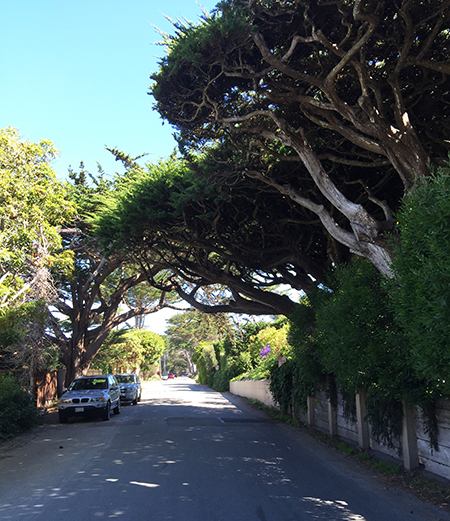 And while we’re on the subject of tiny things, the whole of Carmel proper takes up only about a square mile, which adds significantly to its charm. Buildings and homes nestle against each other under a canopy of pine, cypres, and other trees, adding to the storybook ambience that the city strives to maintain. Such a compact layout is a practical one, too: you can easily walk to anywhere within the commercial district, a distinct advantage given how easily Carmel’s streets become bottled up with vehicles during peak hours and evenings, many of them on the prowl (slowly!) for an ever elusive empty parking space.
And while we’re on the subject of tiny things, the whole of Carmel proper takes up only about a square mile, which adds significantly to its charm. Buildings and homes nestle against each other under a canopy of pine, cypres, and other trees, adding to the storybook ambience that the city strives to maintain. Such a compact layout is a practical one, too: you can easily walk to anywhere within the commercial district, a distinct advantage given how easily Carmel’s streets become bottled up with vehicles during peak hours and evenings, many of them on the prowl (slowly!) for an ever elusive empty parking space.
Another major distinguishing characteristic of Carmel-by-the-Sea, and the one which is featured in the photographs accompanying this post, is the sprawling white sand beach into which the town’s main commercial thoroughfare, Ocean Avenue, descends.
Carmel Beach’s water is cold and the area’s often foggy, but this is one of the most picturesque beaches on California’s Central Coast, and it’s just a short walk away for visitors. The best Fourth of July we ever had as an adult was watching a fireworks show from the comfort of our lounge chairs, around a bonfire, cocktails in hand. It doesn’t get any more American than that!
The street that runs along Carmel beach, Scenic Road, is almost as picturesque as the beach, itself, lined as it is with extraordinary homes in a variety of styles. We’re talking some serious lifestyle cred here—we believe Brad Pitt and Jennifer Anniston used to live in the neighborhood—although handling the constant stream of visitors walking back and forth gawking in front of your home, just like we did when we were scouting for photos, may be seen as a drawback. (Be forewarned, Scenic Avenue is a fairly narrow street forced to accommodate out-of-town motorists staring at scenery, bicyclists, and pedestrians of all speeds. Be careful out there!)
In next week’s installment, we’ll venture up the beach from Ocean Avenue and explore the town center in a little more detail, talk about some of the town’s oddities, and provide the usual insider’s perspective you can’t get anywhere else. We’ll provide as many photos as we can. See you then!



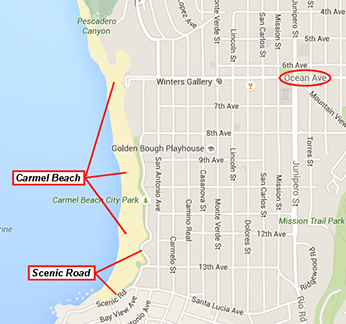
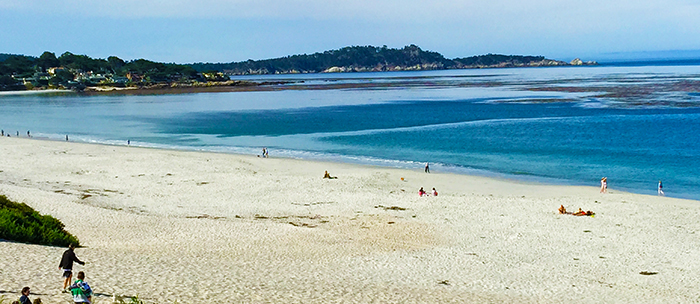
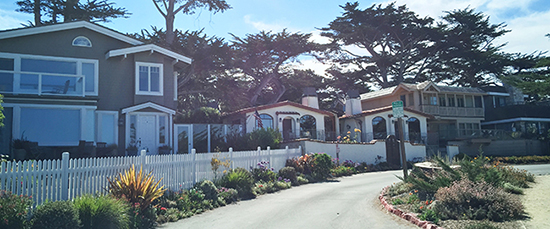
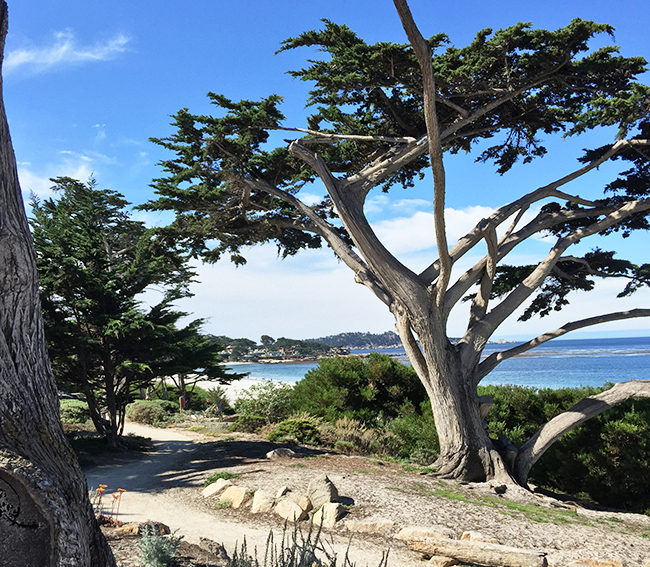





Leave A Comment